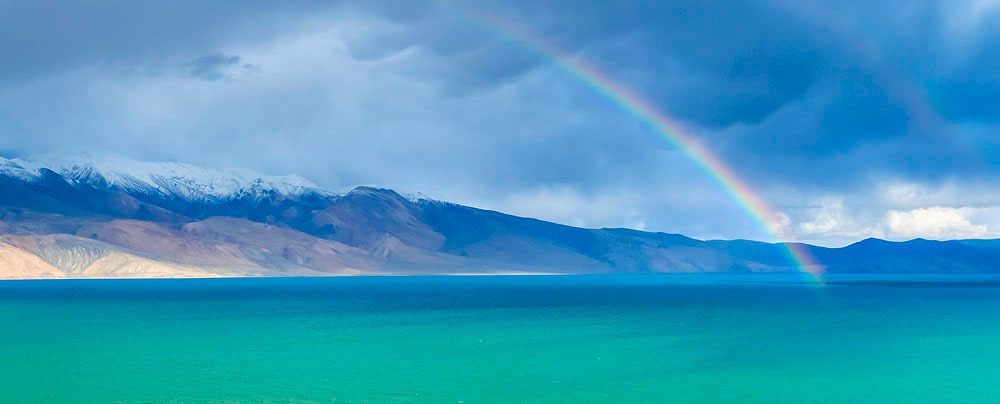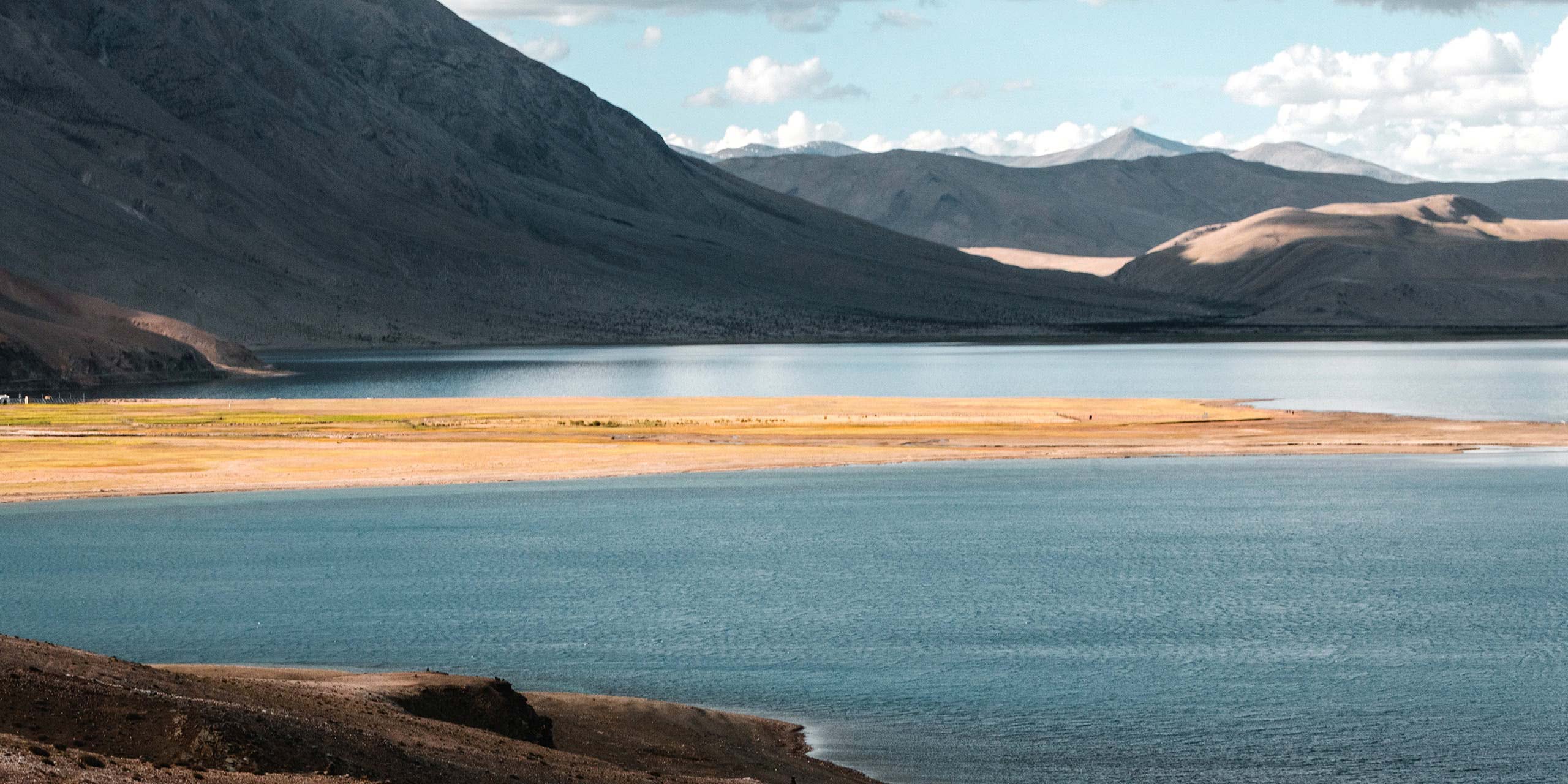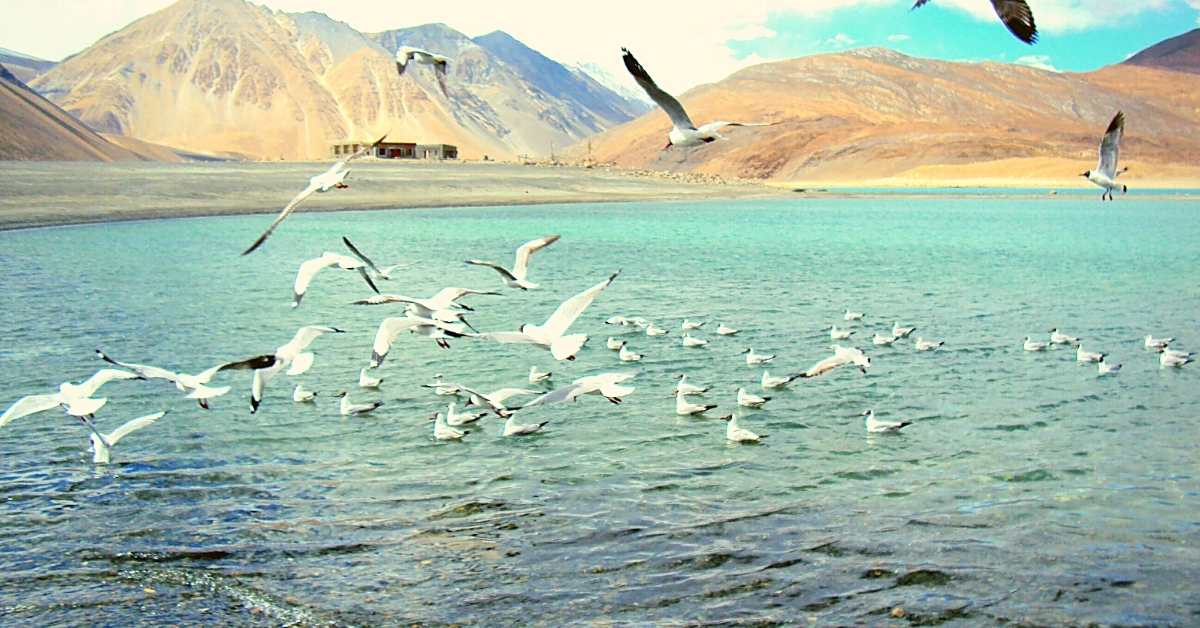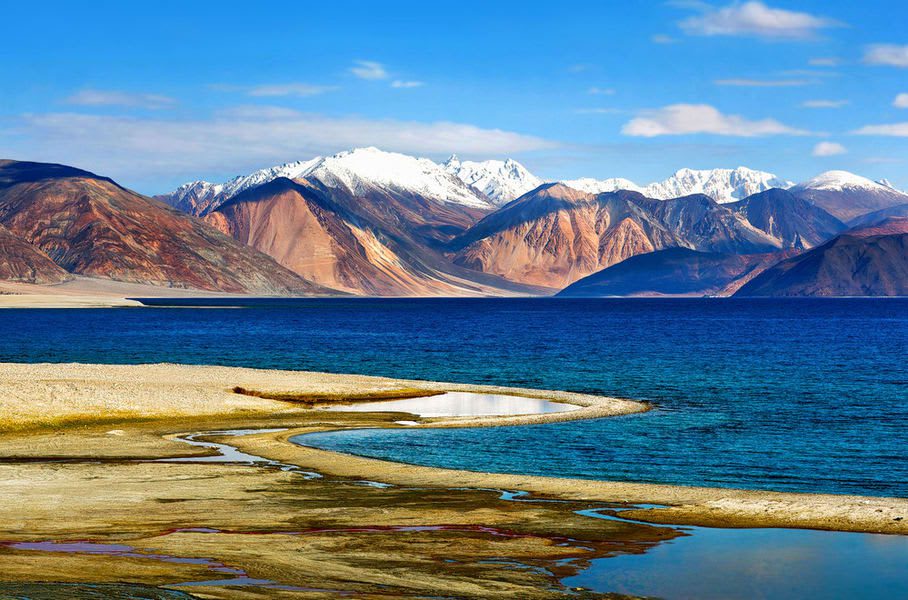Ladakh underwater mysteries are a hidden wonder beneath the region’s stunning lakes. The high-altitude desert of Ladakh is famous for its rugged mountains, Buddhist monasteries, and breathtaking landscapes. But hidden beneath the still waters of Tso Moriri, one of Ladakh’s largest lakes, lies a lesser-known secret: an underwater world brimming with mysteries. For centuries, Tso Moriri has drawn travelers, pilgrims, and adventurers. Now, divers and explorers are setting their sights on the lake’s submerged treasures. In this blog post, we will dive into the ancient lakes of Tso Moriri and explore the underwater mysteries that make this destination an adventurer’s paradise.
The Mystical Underwater World of Tso Moriri Lake
An Overview of Ladakh’s Ancient Lakes
Ladakh is home to several ancient, high-altitude lakes, each with its own unique characteristics. Among these, Tso Moriri stands out as a remarkable example of Ladakh’s glacial lakes, located at an altitude of 4,522 meters (14,836 feet) above sea level. Its serene beauty, surrounded by the towering peaks of the Changthang Plateau, makes it a significant ecological and cultural site.
Tso Moriri, along with other lakes such as Pangong Tso and Tso Kar, formed due to glacial activity thousands of years ago. These lakes play a crucial role in maintaining the region’s delicate ecosystem, supporting a variety of rare species of flora and fauna. Today, Tso Moriri attracts attention not just for its breathtaking surface, but also for the secrets submerged beneath its crystal-clear waters.
What Makes Tso Moriri Unique?
Tso Moriri’s uniqueness stems from its remoteness, high altitude, and biodiversity. It is the largest high-altitude lake entirely within India and remains relatively untouched by tourism compared to the more popular Pangong Tso. The lake’s waters are a striking mix of blues and greens, fed by snowmelt from the surrounding mountains.
In addition to its visual allure, Tso Moriri is recognized as a wetland reserve under the Ramsar Convention, providing sanctuary for endangered species like the black-necked crane and bar-headed geese. Beneath the surface, however, lies an ecosystem few have ventured into—an underwater world teeming with both geological and biological mysteries that are slowly being uncovered by explorers and scientists alike.

The Secrets Beneath: Underwater Discoveries in Tso Moriri
Submerged Mysteries and Legends
Beneath the calm waters of Tso Moriri, divers speculate about the existence of submerged landscapes and ancient structures that could date back centuries. These potential archaeological wonders have remained hidden due to the lake’s extreme altitude and remote location. Legends among the local nomadic communities speak of ancient settlements that once existed along the lake’s shores, now buried underwater due to the region’s shifting climate and glacial melt.
While no large-scale archaeological excavation has taken place yet, smaller underwater expeditions have revealed intriguing signs of human activity along the lakebed. Submerged rock formations, unusual geological structures, and possibly man-made artifacts suggest that there’s much more to be uncovered. These findings could rewrite the history of Ladakh’s ancient lakes, offering insights into the region’s early civilizations and their connection to the environment.
Ladakh’s Hidden Aquatic Treasures
Beyond its archaeological intrigue, Tso Moriri is a treasure trove for underwater biodiversity. At such a high altitude, the lake supports a unique ecosystem that is both fragile and rare. Scuba diving in Tso Moriri offers a glimpse into this hidden world, where divers can encounter species that have adapted to the lake’s extreme conditions.
Fish species such as the snow trout swim in its depths, while diverse aquatic plants line the lakebed. Although the lake’s harsh environment limits the variety of life compared to more temperate waters, what exists is entirely unique to Ladakh. Tso Moriri’s aquatic treasures are critical to the region’s ecological balance, and efforts are underway to protect this fragile underwater environment from the impacts of climate change and human activity.
The Role of Geology in Tso Moriri’s Mysteries
Tso Moriri’s underwater landscape is shaped by its geological history. Formed by glacial activity, the lake is a remnant of ancient ice sheets that once covered the region. Today, geologists and divers are studying the lake’s floor, which is dotted with rocky outcrops and submerged ridges.
The lake’s geology offers clues to Ladakh’s paleoclimatology—the study of the region’s ancient climate. By analyzing sediment layers, scientists can reconstruct past climate patterns, helping to understand how glacial melt and climate change have shaped Ladakh’s high-altitude lakes over millennia.

Diving into the Depths: A Guide to Underwater Exploration
Scuba Diving in Tso Moriri: What You Need to Know
Diving in Tso Moriri is an exhilarating, but challenging experience. High-altitude lake diving requires specialized knowledge and preparation due to the lake’s extreme conditions. The altitude means lower oxygen levels, which can affect divers differently than at sea level. Additionally, the cold waters of Tso Moriri, with temperatures often dropping below 10°C (50°F), necessitate the use of cold-water diving gear, including dry suits.
If you’re planning a dive, it’s essential to get accustomed to the altitude first by spending a few days acclimatizing. Working with an experienced diving operator who understands the unique challenges of high-altitude diving is highly recommended.
Adventure Tourism: How to Experience Tso Moriri’s Underwater World
For adventure seekers, Tso Moriri offers a diving experience unlike any other. While scuba diving in Ladakh is still a niche activity, there are a few specialized operators that offer diving tours for small groups. These tours typically include transportation to the lake, equipment rental, and guidance from professional divers familiar with the underwater landscapes of Ladakh’s lakes.
Tourists can combine diving with other adventure activities, such as trekking around the lake or exploring Changthang’s remote valleys, making it an all-encompassing Ladakh adventure.
Underwater Flora and Fauna of Tso Moriri
Despite its altitude and cold waters, Tso Moriri supports a surprising range of aquatic life. The lake’s underwater flora consists of a variety of algae and aquatic plants that thrive in the nutrient-rich sediments at the bottom. These plants provide food for the snow trout, which in turn supports a delicate ecosystem. While underwater exploration in Tso Moriri is still in its early stages, scientists believe the lake could harbor more biodiversity than previously thought, making it a prime location for further research.

Ladakh’s High-Altitude Lakes: Cultural and Ecological Significance
The Spiritual Importance of Tso Moriri in Ladakh
Beyond its ecological and geological significance, Tso Moriri holds deep spiritual value for the people of Ladakh. The lake is considered sacred by the local Changpa nomads and Tibetan Buddhists. Pilgrims often visit the nearby Korzok Monastery, which overlooks the lake, offering prayers and paying homage to the lake’s spiritual energy.
Local legends tell stories of divine beings residing beneath the lake’s surface, further adding to the lake’s mystical reputation. This cultural significance is intertwined with the region’s efforts to preserve Tso Moriri’s natural beauty, ensuring that the lake remains a sacred and untouched site for generations to come.
Protecting Ladakh’s Unique Ecosystems
The unique ecosystem of Tso Moriri is increasingly under threat from climate change, as rising temperatures alter the region’s delicate balance. Efforts to protect the lake, including its designation as a Ramsar wetland, are aimed at safeguarding its biodiversity and preventing further environmental degradation.
Tourism, while beneficial for the local economy, also poses risks to the lake’s ecosystem. Responsible tourism practices are crucial to ensure that Tso Moriri’s underwater mysteries remain preserved for future exploration and study.
Preparing for a Dive into Ladakh’s Ancient Lakes
Equipment and Safety Precautions for High-Altitude Diving
If you’re planning to explore the underwater world of Tso Moriri, make sure you’re fully equipped with cold-water diving gear, including dry suits, oxygen tanks suited for high altitudes, and appropriate safety equipment. Divers should also undergo altitude training to avoid complications such as altitude sickness.
Planning a Diving Expedition to Tso Moriri
Organizing a dive trip to Tso Moriri involves careful planning due to the lake’s remote location. Permits may be required, and access to the lake is restricted to certain months of the year due to harsh weather conditions. The best time to dive is during the summer months (June to September), when the ice melts and the water temperature becomes more favorable.
Conclusion: Unveiling the Mysteries of Tso Moriri
Tso Moriri’s underwater mysteries are only beginning to be explored, but the potential discoveries that lie beneath its surface could unlock a new chapter in Ladakh’s rich history. From ancient ruins to unique ecosystems, diving into Tso Moriri’s depths offers an unparalleled adventure for those brave enough to explore its secrets. As both an ecological wonder and a spiritual haven, Tso Moriri remains one of the world’s most enigmatic and breathtaking lakes, beckoning adventurers to uncover its mysteries.

FAQs
1. Is diving in Tso Moriri lake safe for beginners?
Due to its high altitude and cold waters, Tso Moriri is recommended for experienced divers with proper acclimatization and equipment.
2. What kind of underwater discoveries have been made in Tso Moriri?
Early explorations have revealed submerged rock formations and signs of potential human activity, sparking interest in further underwater archaeology.
3. Can tourists explore other lakes in Ladakh for diving?
While Tso Moriri offers the most promising underwater exploration, Pangong Tso and Tso Kar are also potential sites for future diving expeditions.
4. What wildlife can be found in Tso Moriri’s waters?
Snow trout and a variety of aquatic plants thrive in the cold, nutrient-rich waters of Tso Moriri, supporting a unique ecosystem.
5. How does the altitude affect diving in Tso Moriri?
The high altitude reduces oxygen levels, requiring divers to acclimatize and use special diving techniques to avoid altitude sickness.
6. Are there any legends surrounding Tso Moriri’s underwater world?
Local legends speak of divine beings and ancient settlements submerged beneath the lake, adding a layer of mystique to its waters.








